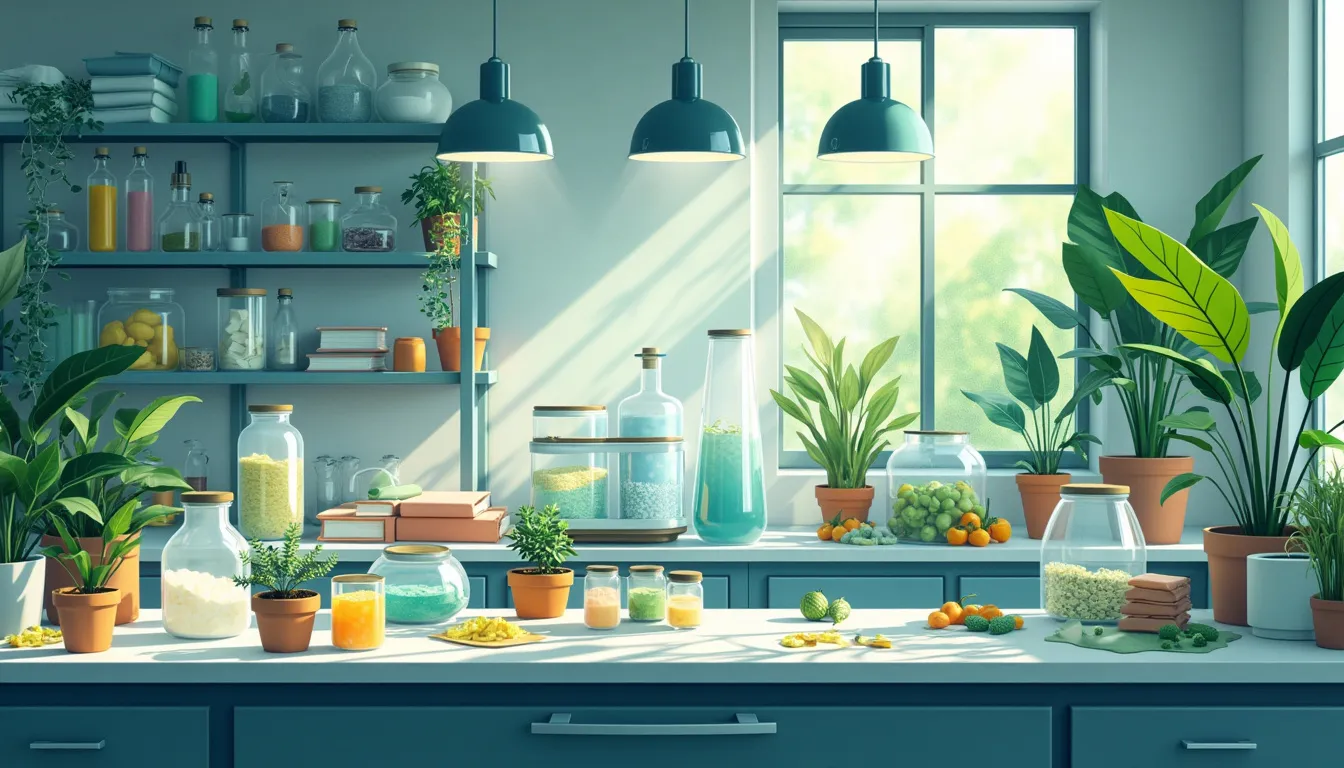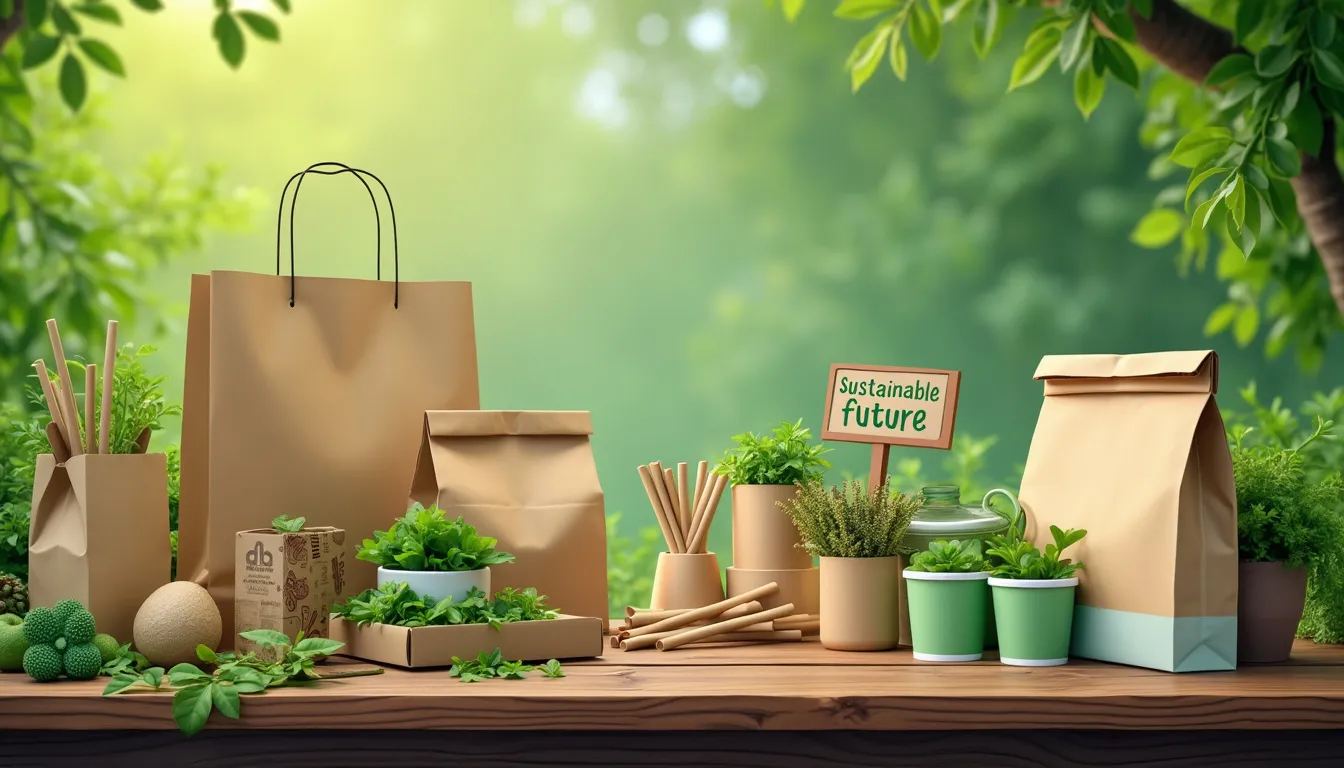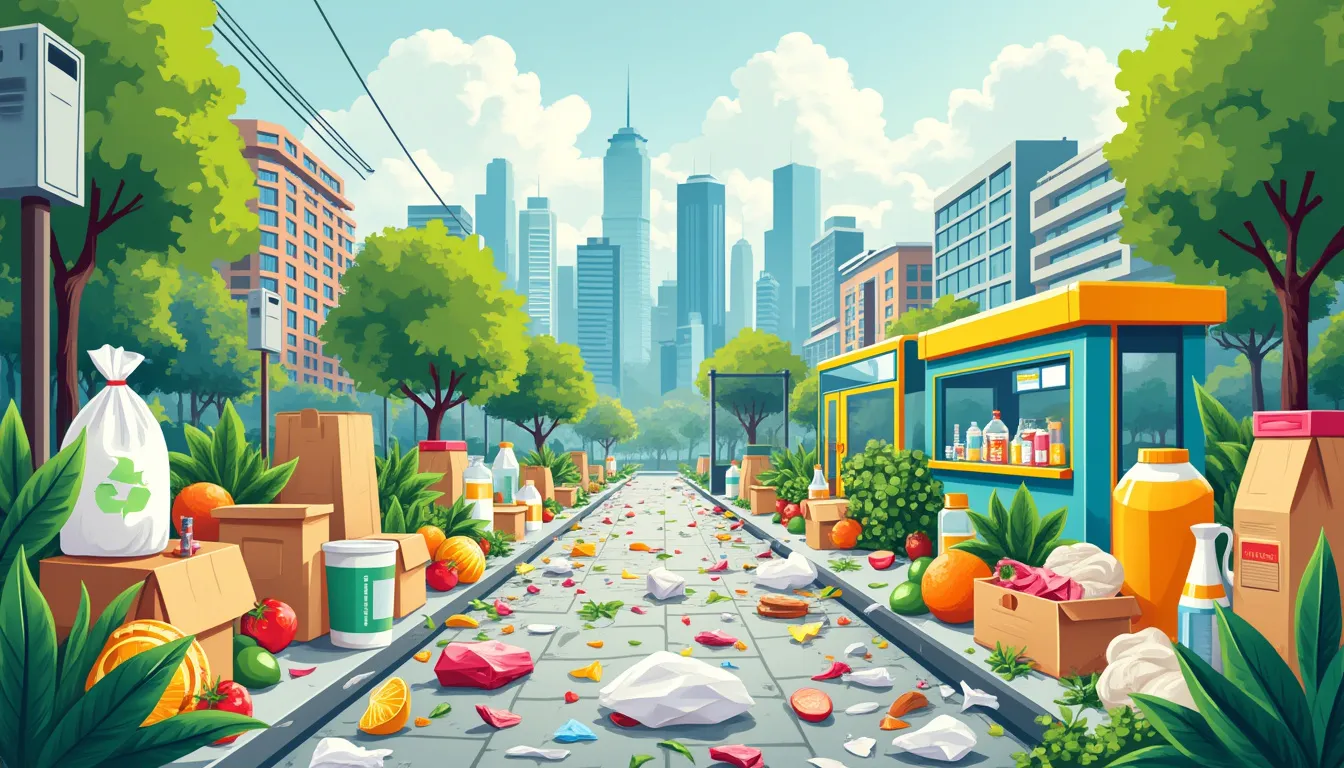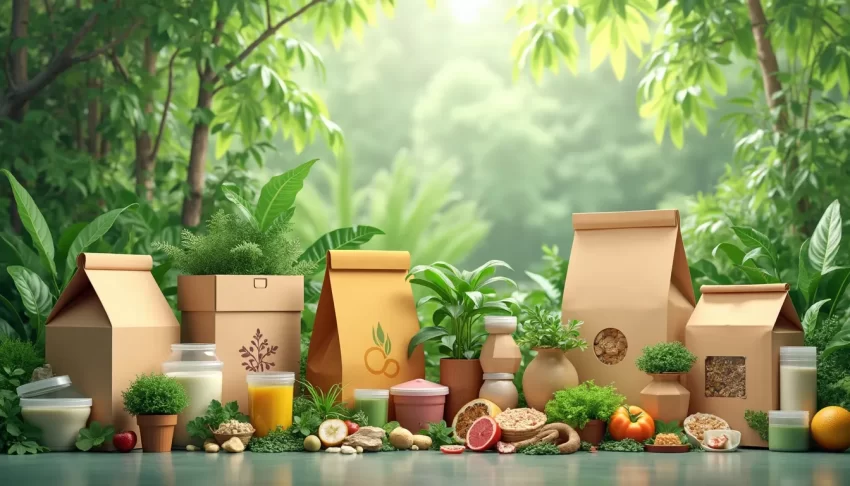In recent years, there has been a significant shift in consumer behavior towards more eco-conscious choices. This change is particularly evident in the packaging industry, where the demand for environmentally friendly packaging has surged. As the world becomes more aware of the environmental challenges we face, the importance of sustainable packaging solutions has never been more critical. Environmentally friendly packaging refers to materials and methods designed to minimize the ecological footprint, often through the use of biodegradable, recyclable, or reusable materials. This approach not only helps to reduce waste but also conserves resources and decreases pollution.
The history of packaging demonstrates a stark contrast to this modern trend. Traditionally, packaging has relied heavily on plastics and other non-biodegradable materials, contributing significantly to environmental degradation. Plastic packaging alone accounts for a large portion of the waste that clogs our oceans and fills our landfills, taking hundreds of years to decompose. This alarming scenario has propelled the move towards more sustainable practices in packaging, driven by both regulatory pressures and changing consumer expectations.
Adapting to these changing attitudes is not just about compliance or image; it’s about making a tangible impact. Businesses that embrace environmentally friendly packaging solutions can not only reduce their carbon footprint but also appeal to a growing segment of consumers who prioritize sustainability. Through innovative materials and cutting-edge technologies, we are witnessing a revolution in how products are packaged and delivered, pointing the way to a more sustainable future.
Understanding the significance of this trend and the innovations driving it is essential for anyone looking to make informed decisions about packaging, whether for personal use or business operations. By exploring the economic and environmental benefits of these practices, as well as the challenges that lie ahead, we can better appreciate the role each of us plays in fostering a healthier planet. In the end, adopting environmentally friendly packaging is a step towards a more sustainable and responsible world, where every choice can make a difference.
1. Introduction to Environmentally Friendly Packaging
Overview of the Rising Trend in Eco-Conscious Consumer Behavior
In recent years, the shift towards eco-conscious consumer behavior has gained significant momentum. More people are recognizing the environmental consequences of their purchasing decisions and actively seeking products with minimal ecological footprints. This evolving consumer mindset is profoundly influencing how brands and businesses operate, particularly in the realm of packaging. The surge in demand for environmentally friendly packaging is a testament to this growing awareness and desire to mitigate environmental harm.
Definition and Importance of Environmentally Friendly Packaging
Environmentally friendly packaging, also known as sustainable packaging, refers to the use of materials and design strategies that have a reduced impact on the environment compared to traditional packaging options. This includes packaging that is recyclable, biodegradable, compostable, or made from renewable resources. The importance of environmentally friendly packaging lies in its potential to significantly cut down on waste, conserve natural resources, and lower pollution levels. By opting for sustainable packaging, businesses can reduce their ecological footprint, align with the values of eco-conscious consumers, and contribute to global efforts in combating climate change.
Brief History of Packaging and Its Environmental Impact
The history of packaging is a long and varied one, marked by continual innovation aimed at improving convenience, safety, and shelf life of products. In the early days, packaging was primarily made from natural materials like leaves, animal skins, and clay. It wasn’t until the Industrial Revolution that packaging began to take on forms we recognize today, with the advent of materials like glass and metal.
However, the invention of plastic in the early 20th century revolutionized the packaging industry. Due to its durability, light weight, and versatility, plastic quickly became the material of choice for a wide range of packaging needs. While initially celebrated as a breakthrough, the environmental repercussions of plastic soon became evident. Non-biodegradable and challenging to recycle efficiently, plastic packaging has heavily contributed to landfill overflow and ocean pollution. Studies show that millions of tons of plastic waste end up in the oceans each year, posing severe risks to marine life and ecosystems.
This stark environmental impact has sparked a global outcry and led to a reevaluation of packaging practices. The last few decades have seen a burgeoning interest in sustainable alternatives. Governments, businesses, and consumers are now advocating for packaging solutions that are not only practical but also environmentally responsible.
The importance of moving towards environmentally friendly packaging cannot be overstated. If present trends continue, it is estimated that by 2050, there could be more plastic in the ocean than fish. This alarming scenario underscores the urgent need for sustainable practices in packaging to forestall further environmental degradation.
In conclusion, environmentally friendly packaging is more than a trend; it’s an essential change addressing the urgent need to protect our planet. By understanding its significance and embracing sustainable choices, we can make a tangible difference.

Innovations Driving Environmentally Friendly Packaging
Development of Biodegradable and Compostable Materials
One of the most exciting advancements in environmentally friendly packaging is the development of biodegradable and compostable materials. Traditional plastics, as we know, can take hundreds of years to break down, if ever, often accumulating in landfills and oceans. Enter biodegradable materials, which decompose more quickly thanks to natural environmental conditions. Companies are now producing packaging from bioplastics derived from renewable sources like cornstarch, sugarcane, and even algae. For example, the Italian company Novamont has innovated with Mater-Bi®, a family of bioplastics made from vegetable starches, which can break down within a few months in a composting environment.
Compostable packaging goes a step further. These materials not only break down but also turn into nutrient-rich compost that benefits the soil. Companies like Vegware offer a wide range of compostable packaging items, from coffee cups to food containers, all of which fit seamlessly into commercial composting processes. This focus on compostability enables a closed-loop lifecycle for packaging, reducing the strain on waste management systems and the environment.
Advances in Recyclable and Reusable Packaging Solutions
Another significant innovation in environmentally friendly packaging revolves around recyclability and reusability. Many traditional packaging materials, like certain plastics, are technically recyclable but not always recycled due to contamination or lack of facilities. Solutions now focus on creating packaging that is easier to recycle and has higher post-consumer value.
Take Loop Industries, for instance. They have developed a groundbreaking method to recycle PET plastic waste back into high-purity, food-grade PET resin. This process involves breaking down used plastic with monomers and then repolymerizing it to create new plastic, effectively keeping the material in use indefinitely. Loop’s technology highlights a move towards a circular economy where materials are continuously repurposed.
Reusable packaging is also gaining traction, particularly in the e-commerce and retail sectors. Companies like Algramo offer refillable packaging solutions that reduce single-use plastic waste. Algramo’s smart dispensing system allows consumers to buy products in bulk, using the same container repeatedly. This model not only cuts down on packaging waste but also often results in cost savings for consumers and suppliers alike.
Examples of Innovative Companies and Startups in this Space
Several innovative companies and startups are leading the charge in developing and adopting environmentally friendly packaging solutions. They exemplify a shift towards more sustainable business practices and inspire others to follow suit.
One standout example is Ecovative Design, a company that has developed packaging materials from mycelium, the root structure of mushrooms. Mycelium packaging is sturdy, biodegradable, and can be grown into almost any shape. This innovation offers an alternative to polystyrene foam (Styrofoam), which is notoriously difficult to recycle and harmful to the environment.
Another innovative company is Notpla, which creates packaging from seaweed and other plant materials. Their product range includes edible water bubbles and coatings for takeaway food boxes that are biodegradable and even edible. Notpla’s seaweed packaging has seen usage at various events, including the London Marathon, where runners were offered water in edible seaweed pouches instead of plastic bottles.
Lastly, Apeel Sciences is revolutionizing food packaging with its plant-derived coating that extends the shelf life of fruits and vegetables. This coating reduces the need for plastic packaging and helps minimize food waste, addressing two significant environmental issues simultaneously. Apeel’s innovation is particularly relevant in the food industry, where packaging and spoilage contribute substantially to environmental degradation.
These examples illustrate that environmentally friendly packaging is not only feasible but also commercially viable. By tapping into biodegradable, recyclable, and reusable materials, and through the efforts of pioneering companies, the packaging industry is undergoing a remarkable transformation.
Innovations in environmentally friendly packaging are playing a crucial role in addressing the pressing environmental issues of our time. By adopting biodegradable and compostable materials, enhancing recyclability and reuse, and learning from the groundbreaking efforts of forward-thinking companies, we can all contribute to a more sustainable future. As consumers, business owners, or policymakers, the choices we make today will shape the world of tomorrow. The momentum is building; it’s time to join the movement towards smarter, greener packaging solutions.

Economic and Environmental Benefits of Environmentally Friendly Packaging
Switching to environmentally friendly packaging offers a range of benefits, both economically and environmentally. As businesses increasingly adopt sustainable practices, they not only contribute to the health of our planet but also discover tangible cost savings and respond to growing market demands for greener products. Let’s dive into how making this shift can be both smart and financially savvy.
Cost-Effectiveness and Long-Term Savings for Businesses
Initially, the thought of overhauling packaging practices can be daunting for business owners, primarily due to perceived higher costs. However, a deeper look reveals a different story. Environmentally friendly packaging often proves to be more cost-effective over the long term.
Consider the materials used in eco-friendly packaging. Biodegradable options like cornstarch-based packaging, recycled paper, or plant-based plastics, although sometimes pricier upfront, reduce the need for expensive waste management systems. This reduction in waste management costs can significantly affect the bottom line. Additionally, these materials are increasingly becoming cost-competitive as more companies join the movement, leading to economies of scale.
A notable example comes from IKEA, which announced that it would phase out all single-use plastic items from its stores and restaurants by 2020. This move was part of its broader sustainability agenda, which also included sourcing 100% renewable and recycled materials by 2030. While there may have been initial costs associated with sourcing alternative materials, IKEA projected significant savings through reduced waste management expenses and improved brand loyalty.
Another facet is the reduction in energy consumption. Producing packaging from recycled materials generally requires less energy than creating new materials from scratch. By cutting energy use, businesses can lower their utility bills and contribute to overall financial savings.
Reduction in Carbon Footprint and Waste
Moving to environmentally friendly packaging significantly reduces the carbon footprint of a business. Traditional packaging materials, notably single-use plastics, contribute massively to greenhouse gas emissions and litter our oceans, contributing to the tragic plastic pollution crisis.
The Environmental Protection Agency (EPA) reported that in the United States alone, containers and packaging constituted a major portion of municipal solid waste, amounting to 82.2 million tons in 2018. By adopting eco-friendly packaging, businesses can play a pivotal role in slashing this figure.
Take Patagonia, for instance. This outdoor apparel company has gained recognition not just for its durable products but also for its commitment to sustainability. By switching to renewable and biodegradable packaging, Patagonia has managed to drastically cut down its carbon emissions. They incorporated recycled materials for packaging, which has helped in significantly reducing waste.
Furthermore, biodegradable and compostable packaging benefits the environment by breaking down naturally, reducing landfill volume and the associated methane emissions. This not only helps in diminishing the carbon footprint but also fosters a circular economy where materials are continually reused, recycled, and eventually returned to the earth without causing harm.
Consumer Demand and Market Trends Towards Sustainability
Modern consumers are more informed and eco-conscious than ever before, influencing market trends and business practices. Sustainable packaging has become a significant purchasing consideration for many. A Nielsen report highlighted that approximately 48% of U.S. consumers would definitely or probably alter their consumption habits to reduce environmental impact. This percentage is even higher among Millennials, who are expected to drive the market in the coming years.
For businesses, this shift in consumer behavior can translate into increased sales and enhanced brand loyalty. When customers perceive a brand as environmentally responsible, they are more likely to form a positive connection and make repeated purchases. Companies like Seventh Generation and Method have thrived by prioritizing green packaging, building a loyal customer base that values sustainability.
Moreover, businesses that emphasize sustainability can differentiate themselves in a crowded marketplace. As consumers increasingly scrutinize corporate environmental practices, those offering environmentally friendly packaging stand out as leaders, potentially drawing in ethically-minded customers and driving market share growth.
Adopting environmentally friendly packaging is not just a passing trend; it is a vital strategy for the future. By focusing on cost-effectiveness, reducing carbon footprints, and aligning with consumer demand, businesses can look forward to both a healthier planet and a robust bottom line. This duality of economic and environmental benefits makes the shift toward sustainable packaging not just a wise choice, but an imperative one for responsible business practices.

Challenges and Future of Environmentally Friendly Packaging
While the shift towards environmentally friendly packaging offers numerous benefits, it is not without its challenges. Understanding these hurdles is crucial for businesses and consumers alike to fully appreciate the complexities involved in making packaging more sustainable. Let’s delve into some current limitations and obstacles, the impact of regulations, and the future trends poised to drive further innovation in this space.
Current Limitations and Obstacles in the Adoption of Sustainable Packaging
Despite the growing interest and demand for environmentally friendly packaging, there are several barriers to its widespread adoption:
1. Cost Concerns
One of the predominant challenges is the higher initial cost of sustainable materials compared to traditional plastic or paper options. For smaller businesses, this can be a significant financial burden. Although eco-friendly materials often prove cost-effective in the long run, the upfront investment can be a deterrent.
2. Material Availability and Performance
The availability of sustainable materials is another pressing issue. Biodegradable options like polylactic acid (PLA) are derived from renewable resources such as corn starch, but sourcing these materials in large quantities can be challenging. Additionally, some eco-friendly materials may not yet match the performance and durability of conventional plastics, affecting their suitability for certain products and industries.
3. Consumer Perception and Misinformation
Educating consumers about the benefits and proper disposal methods for sustainable packaging is essential but often overlooked. Misinformation or lack of awareness can lead to incorrect disposal practices, undermining the environmental benefits. Moreover, consumers might be skeptical about new materials, necessitating effective communication and transparency from brands.
Regulatory Landscape and Its Impact on Packaging Innovation
Government regulations and policies play a pivotal role in shaping the market for environmentally friendly packaging. Here’s how:
1. Regulatory Push for Reductions in Plastic Use
Many countries and regions are implementing stringent regulations aimed at reducing plastic waste. For instance, the European Union’s Single-Use Plastics Directive targets the most prevalent plastic items found in the ocean, mandating reductions or bans on products like straws, cutlery, and cotton swabs. These policies are driving the need for sustainable alternatives and accelerating innovation in the industry.
2. Standards and Certifications
Regulations also define standards for what qualifies as environmentally friendly. Certifications such as the Forest Stewardship Council (FSC) for paper products or the Biodegradable Products Institute (BPI) for compostable materials provide benchmarks that help businesses and consumers identify genuinely sustainable options. However, meeting these standards can require additional testing and compliance costs.
Future Trends and the Role of Technology in Shaping Eco-Friendly Packaging Solutions
Despite the challenges, the future of environmentally friendly packaging is bright, buoyed by ongoing technological innovations and evolving consumer and regulatory landscapes. Here are a few trends to watch:
1. Innovations in Material Science
Continued advancements in material science are set to revolutionize the packaging industry. Research is ongoing into developing new bioplastics that combine the biodegradability of natural materials with the performance characteristics of traditional plastics. For example, scientists are exploring nanocellulose and algae-based packaging, which offer promising results in terms of strength and degradation.
2. Enhanced Recycling Technologies
Improving recycling infrastructure and technologies can significantly impact the efficacy of sustainable packaging. Closed-loop recycling systems, where materials are continually reused, are becoming more sophisticated. Innovations such as chemical recycling, which breaks down plastics at the molecular level for reuse in new products, present exciting possibilities for reducing waste.
3. Smart Packaging Solutions
The rise of smart packaging, incorporating technologies like QR codes and embedded sensors, enhances both sustainability and user engagement. Smart packaging can provide consumers with information on recycling practices, track the freshness of perishable goods, and reduce food waste. These innovations support a circular economy by encouraging responsible usage and disposal.
4. Collaborative Efforts and Industry Partnerships
Collaboration across the supply chain will be critical for the success of environmentally friendly packaging. Industry partnerships, such as the Circular Plastics Alliance in the EU, bring together manufacturers, recyclers, and policymakers to develop and implement holistic solutions. Collaborative efforts can drive standardization, share best practices, and foster innovations that individual entities might struggle to achieve alone.
In conclusion, while the path to widespread adoption of environmentally friendly packaging is fraught with challenges, the ongoing advancements and future trends offer substantial hope. By addressing cost concerns, improving material performance, enhancing consumer education, and navigating regulatory landscapes, businesses can increasingly shift towards sustainable packaging solutions. The role of technology and collaborative efforts cannot be overstated, as they are essential in driving the next wave of innovation that makes eco-friendly packaging more accessible and effective for all.
As we wrap up our exploration of environmentally friendly packaging, it’s clear that the urgency for sustainable solutions is more crucial than ever. Our planet is at a tipping point, and the choices made by individuals and businesses alike can significantly affect our environmental trajectory. The transition towards eco-conscious consumerism isn’t just a fad; it’s a fundamental shift in how we perceive our responsibility towards the Earth and future generations.
We’ve seen how innovative materials like biodegradable and compostable substances are transforming the packaging landscape. These advancements offer a promising alternative to traditional plastics that have long plagued our environment. Companies are not just adopting, but pioneering new methods to reduce their carbon footprint while responding to an increasingly eco-aware customer base. Startups and established businesses alike have shown that economic growth need not come at the expense of our planet. There’s a compelling case to be made that environmentally friendly packaging can actually foster cost-efficiency and drive long-term savings.
Yet, it’s not an entirely smooth road. With any major shift, there are challenges to overcome. Limited resources, higher initial costs, and varying regulations across regions create hurdles that can slow down or complicate the adoption of these green solutions. However, the role of technology is pivotal and promising. As innovations continue to emerge, they hold the potential to address these obstacles, making sustainable packaging more accessible and effective.
Despite these challenges, the momentum towards sustainable packaging solutions is unstoppable. The regulatory landscape is evolving, pushing industries towards greener practices, while consumer demand for sustainable products continues to rise. This shared vision for a more sustainable future aligns well with market trends and offers ample opportunities for businesses willing to adapt.
For individuals and business owners reading this, the takeaway is clear: every step towards sustainable practices counts. Whether it’s opting for reusable packaging in your day-to-day life or implementing eco-friendly materials in your business operations, you contribute to a larger, positive impact on our environment. Small changes encapsulate the essence of progression—both personally and within the market. Let’s continue to support and innovate towards a world where environmentally friendly packaging not only becomes the norm but also a testament to human ingenuity and responsibility.
Moving forward, consider how you can be part of this vital transformation. Choose products that prioritize sustainable packaging, encourage your local businesses to adopt greener practices, and stay informed about new innovations in this space. Together, we can drive a wave of change that ensures a healthier, more sustainable planet for all.
Support Us: Check out our recommended products on Amazon.

